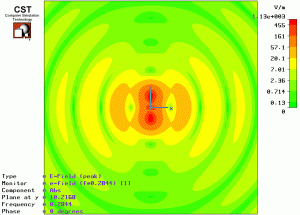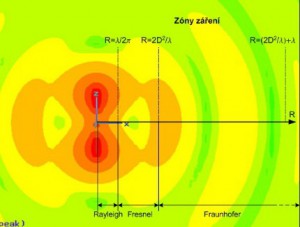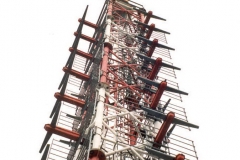Dipoles and monopoles are probably the most used antennas as they are relatively simple to build and offer omnidirectional radiation.
For theory see:
Orphanids, S: Electromagnetic Waves and Antennas, 2004-10, chapter 14: http://eceweb1.rutgers.edu/~orfanidi/ewa/ch17.pdf
Kraus, J.D., Marhefka, R.J.: Antennas for all applications, Mc Graw Hill 2003, chapter: The Electric Dipole and Thin Linear Antennas (6)
Simulations - 1/2 wavelength dipole:
 |
The picture shows (click to animate) oscillation - red inner part on the picture and flow E fields component. Mean value of the power (oscillation in vertical orientation) of the oscillation is zero. It means no energy transport in this direction (along the dipole). Omnidirectional flow of the E component in the horizontal direction introduces the transport of the energy away from antenna. Of course, close to the antenna there are still some small oscillation. This components form the near field around the antenna and are negligible with the growing distance from the antenna. A general spherical character of the wave front is visible too. |
 |
The static picture on the left denotes the “three zones” around the antenna – near field non radiative, radiative near field and far field. Near filed does not bring any propagating component, but it is basic condition for the radiating field. In the case of the dipole, the distance approx. λ/2π is supposed to be near field zone and this area should not be disturb by any other object, because the basic parameters of the antenna (impedance, radiation patter) will be changed.
|
Gallery:



